The world has had many expressively spacey composers: Englishman Gustav Holst and his seven-movement orchestral suite “The Planets” (famously, each movement is named after a planet in our solar system, first performed in 1918) — comes straight to mind.
And now the super-producer behind Adele and Florence and the Machine — the Brit award winner Paul Epworth — has thrown his hat into the ring with a dazzling new space-rock album titled “Voyager” that’s an enjoyable sci-fi epic likely inspired by Epworth’s childhood musical experiences…
So what albums did Epworth and other like-minded astrophysicists/music savvy enthusiasts listen to while they assimilated their planetary nebula and twiddled with their synth knobs?
Get your spectroscopes out, let us begin:
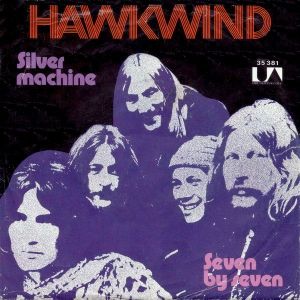
1: Hawkwind “In Search of Space”
They say Lacuna Coil fans will pick out influences from this standout, space-themed album.
Hawkwind walked the subtle gap between electronic and classic rock on this, their second album (1971), so you get chaotic and frenetic rhythms with accumulated atmospheres but they come bundled with wild ideas and solid riff-work.
It’s high-energy, it’s trippy, and of course, it’s splendidly moony. It employs Steve Millerish riffs along with 12-string acoustic bits and, of course, it delivered the immensely successful chart hit “Silver Machine.” When we first saw the show, it boasted the interpretive dancer Stacia. Ah, better days…

2: Space “Space” (1990)
Space was the half-spinning project of Rockman Rock aka Jimmy Cauty (married to Alannah Currie by the way) after The KLF and prior to the co-founding of The Orb.
As an original member of Zodiac Mindwarp, Jim always had his eye on the larger galaxy, But his ambient house concept “Space” kinda flew under the big-dish radio antennae upon (and certainly after) its demure release.
In fact it’s a sort-of an unsophisticated “Orb” with basic bits of KLF chunks flying around its star chart. But it’s fun, fun, fun from beginning to end.
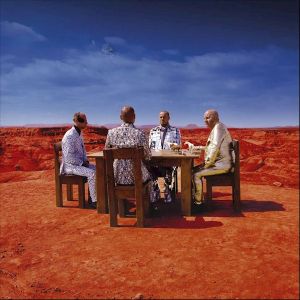
3: Muse “Black Holes and Revelations”
Like Hawkwind before them, the Teignmouth trio went “pop” on this (their fourth studio album) but it’s also properly superfluid in its cosmological approach, with much use of pitch shifters, moogs and of course blank space.
Never ones to appreciate being put into any pigeonhole, let alone the “space rock” drawer, the muso’s suggested the album was about “regret, ambition and love…” — but seeing as it was later repackaged under the HAARP banner (named after the ionospheric research program) — you don’t have to be a conspiracy theorist to understand that this material has more to do with nucleosynthesis than it does with human emotions.
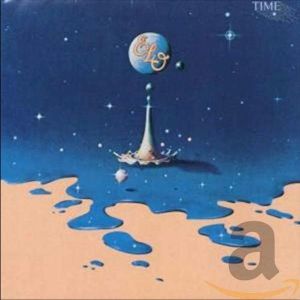
4: ELO “Time” (1981)
Though little known, even by fans, “Time” is probably the best of all the Orchestra’s album releases. It offers soaring rhythms, towering strings, and luscious harmonies with a “proper” conceptual theme running through it.
It’s pretty synthetic, with tasty electro-pop trills and lots of complexity in the use of sci-fi technology. And with those secretly encoded messages and a true sense of empty astral space, this is a star in the prog-pop galaxy!

5: Manfred Mann’s Earth Band “Solar Fire” (1974)
Influenced by Holst’s Planets, “Solar Fire” is probably Manfred’s only “proper” progressive rock outing (despite the superlunary name, ie Earth Band, and somewhat cosmic aspirations).
So dive into plummeting guitars, analyzable keyboards, intricacies of theme, and mind-expanding conceptuality. Expect supersymmetry in rocket-loads.
Yep, this is a mind-flipping journey through Manfred’s mesosphere

6: Tangerine Dream “Phaedra” (1973)
Described as an “Oort musical cloud” by fans, this blue-cloaked beauty introduced German New Age synthesized instrumental rock to a new generation of progressives around the world.
Released during the band’s “Virgin years” it was their first commercial success.
Apparently, the Moog sequencer took “several days” to tune-up… and the oscillators needed hours to warm. Thus, much of the recording became little more than a series of semi-fluid improvisations: but this creative approach led to the floaty sensation of radioactive decay, graviton-lit airings and ever-spiraling nebula in a musical universe of antineutrons. Spectacular!
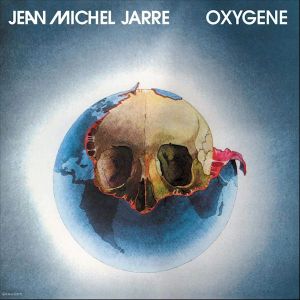
7: Jean Michel Jarre “Oxygène” (1976)
The universe is limitless and the universe is timelessness; Yet, paradoxically, nature on earth is fragile and short.
These are the themes that Frenchman Jarre explored in his home studio in the mid-Seventies, using analogue synthesizers, (one digital) some D.I.Y. sequencers and an old eight-track recorder.
Accused of being “Lightweight Mahler” and “Recherché Bach” when it came out, and also less innovative than contemporary work from Tangerine Dream and Mike Oldfield, the album was nevertheless eventually recognized as the mellotron masterpiece of the 1970s and a truly outstanding contribution to what later became known as “chill out” space music.
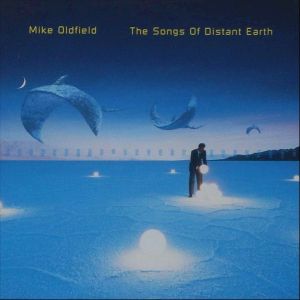
8: Mike Oldfield “The Songs of Distant Earth” (1994)
Based on the science fiction novel of the same name by Arthur C. Clarke, this album explores the destruction of the Earth in the year 3600, after our Sun goes nova.
It is a very diverse composition with cosmic sci-fi sounds that sit alongside medieval polyphony, Polynesian voices, and Sápmi jingles.
It brings Celtic and folkloric perspectives to the fore with galactic breadth. Wonderful!
Missed any? Let us know @rawrampmag
Words: @neilmach 2020 ©

